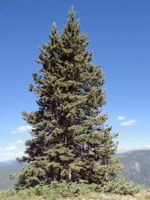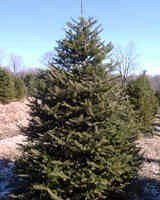Mon-Fri 9am - 5pm Mountain time
Douglas Fir vs Canaan Fir
Pseudotsuga menziesii var. glauca
Abies balsamea phanerolepis
CUSTOM GROW
Douglas Fir is a large coniferous tree with a pyramidal shaped crown.
This attractive feature tree, with its distinctive drooping cones, is perfect for any grower who has lots of space and lives in a warm enough region. Douglas Firs make exceptional Christmas trees.
It is not suitable to all growing environments. Do some research and make sure this tree is right for you.
Our seed source is typically from the interior of BC and rocky mountain areas. We do not produce coastal seed source Douglas Fir as it is better suited to its native range and some taxonomists believe the two seed sources might be distinct.
Canaan Fir, which is closely related to Balsam Fir, is known for its open-growing patterns and strong branches.
Canaan Fir is highly adaptable to many soil conditions and thrives in both shaded areas or direct sunlight. It is commonly used for Christmas tree farming or reforestation.
This rugged landscape tree remains green year-round.
Douglas Fir Quick Facts
Canaan Fir Quick Facts
In row spacing: 3 m (10 ft)

